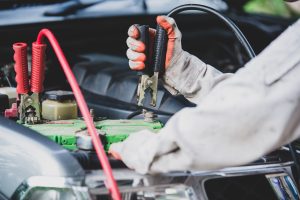Replacing your vehicle’s ignition coil can be a game-changer, enhancing performance and fuel efficiency. In this comprehensive guide, we’ll explore the dos and don’ts of Ignition Coil Replacement, ensuring you rev up your engine without a glitch.

The Basics: Ignition Coil 101
Understanding the ignition coil’s role is crucial. It’s the powerhouse, transforming low-voltage power from the battery into the high-voltage spark needed to ignite the fuel.
Signs Your Ignition Coil Needs Replacement
Spotting the warning signs early can prevent breakdowns. Look out for erratic engine performance, stalling, or difficulty starting the vehicle.
Dos of Ignition Coil Replacement
Gather the Right Tools
Having the proper tools ensures a smooth replacement process. Basic tools like a socket set, pliers, and a torque wrench are essential.
Disconnect the Battery
Safety first! Prevent electrical shocks by disconnecting the battery before getting hands-on with the ignition coil.
Identify and Access the Ignition Coil
Locate the faulty ignition coil and ensure easy access for removal and replacement.
Follow Manufacturer Guidelines
Every vehicle is unique. Adhere to the manufacturer’s guidelines for ignition coil replacement, found in your vehicle’s manual.
Don’ts of Ignition Coil Replacement
Don’t Neglect Safety Measures
Avoid shortcuts. Safety should always come first. Wear protective gear, especially eye protection, to shield against any accidental sparks.
Don’t Force Connections
Gentleness is key. If a connection feels resistant, reassess before forcing it. Damage during replacement can lead to further issues.
Don’t Overlook Other Components
While focused on the ignition coil, inspect surrounding components. Addressing potential issues now can prevent future breakdowns.
Don’t Skip Testing
After replacement, test the ignition coil to ensure it functions correctly. A simple multimeter can confirm the new coil’s efficacy.
Ignition Coil Replacement Dos and Don’ts: A Handy Checklist
Ensure a smooth process by following this checklist:
- Dos:
- Refer to the vehicle manual.
- Use dielectric grease on connections.
- Test the new ignition coil.
- Don’ts:
- Force connections.
- Neglect safety gear.
- Skip testing.
Frequently Asked Questions (FAQs)
How often should I replace the ignition coil?
On average, every 100,000 miles, but check your vehicle manual for precise intervals.
Can I replace the ignition coil myself?
If you’re comfortable with basic car repairs and have the right tools, it’s possible. However, professional help is recommended for those unsure.
Is a misfire always a sign of a faulty ignition coil?
While a misfire can indicate ignition coil issues, it’s not the only cause. Consult a professional for accurate diagnosis.
What happens if I ignore a faulty ignition coil?
Ignoring it can lead to decreased fuel efficiency, increased emissions, and potential damage to the catalytic converter.
Can I use aftermarket ignition coils?
Yes, but ensure they meet manufacturer specifications to avoid compatibility issues.
How long does it take to replace an ignition coil?
Typically, it takes around 30 minutes to an hour, but this can vary based on vehicle make and model.
Conclusion
Replacing your ignition coil is a manageable task with the right knowledge. Follow the dos and don’ts, refer to your vehicle manual, and don’t hesitate to seek professional help if needed. Ignition Coil Replacement Dos and Don’ts: A Handy Checklist ensures a smooth ride ahead.
At AA Mobile Mechanic, we understand the challenges you face when your vehicle breaks down. It’s frustrating, inconvenient, and often stressful. You might be stuck on the side of the road, running late for an important meeting, or facing unexpected expenses. We’ve been there too.
